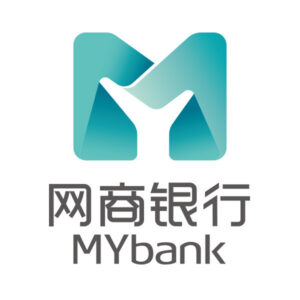
There Are Only 11 Profitable Challenger Banks In Asia — Here’s The List
by Fintech News Singapore June 2, 2023Most digital challenger banks around the world are struggling to turn a profit, hampered by high customer acquisition costs, burdensome regulatory compliance requirements and limited revenue streams.
Boston Consulting Group (BCG) estimates that a mere 5% of over 450 global digital challenger banks were profitable in 2022. Of these 20 digital challenger banks, 11 are located in Asia-Pacific (APAC), eight are located in Europe and one is located in Latin America.

Profitable digital challenger banks worldwide, Source: BCG Fintech Control Tower, May 2023
These figures imply that APAC digital challenger banks have been relatively more successful than their European or American counterparts, a success which analysts and industry observers often attribute to the region’s unique characteristics that include its large population of unbanked, strong mobile culture and rapidly growing middle class.
APAC countries, such as India, China and Southeast Asian nations, have significant unbanked and underbanked populations, an opportunity which many digital challengers are tapping into with accessible and convenient banking services through mobile devices.
According to BCG, there are roughly 2.8 billion underbanked adults in the world (50% of which reside in emerging economies), and an additional 1.5 billion are unbanked (75% of which reside in emerging economies).
In addition, many APAC countries are experiencing a rapid growth of the middle class, leading to an increased demand for user-friendly banking services that cater to this expanding market segment.
Supportive government initiatives and favorable regulations are also playing a critical role in the success of digital challenger banks in APAC. In locations such as Singapore, Hong Kong and the Philippines, financial regulators have implemented progressive regulations that encourage innovation and competition in the banking sector, supporting, for example, open banking initiatives, fintech partnerships and digital onboarding.
With digital banking usage and adoption soaring across the region, we’ll look today at the 11 neobanks in APAC that have reached profitability to get a sense of the region’s up-and-coming digital banking licenses. Of these 11 digital challenger banks, four are located in China, four others are in Japan, while Korea, Indonesia and India each has one.
WeBank

WeBank is a private Chinese neobank founded in 2014 by Tencent, Baiyeyuan, Liye Group, and other companies. The bank focuses on providing better and more inclusive financial services to the mass population as well as small and medium-size enterprises (SMEs).
WeBank does business 100% online and grants loans through face recognition technology and big data credit ratings.
WeBank is the world’s biggest digital challenger bank in terms of number of customers, serving more than 340 million individual customers and almost 2.8 million SMEs on its digital platform.
MYBank

Formed in 2015 with a focus on serving SMEs and farmers, MYbank is a Chinese online private commercial bank and an associate of Ant Group.
Like WeBank, MYBank bank operates virtually without physical branches, and leverages its mobile app and cloud-based infrastructure to allow SME owners to obtain a collateral-free business loan in just a few clicks on their phones. The entire application process can be completed within three minutes, approved within one second and requires zero human interaction.
MYBank served over 45 million small-and-micro enterprise (SME) clients at the end of 2021.
AiBank

AiBank, a joint venture between state-owned financial group Citic and Internet giant Baidu, is a digital-only bank in China that serves individuals and SMEs.
The bank aims to leverage artificial intelligence (AI) and advanced technologies to offer convenient and personalized financial services, including loans, deposits, wealth management and payments.
According to AiBank’s own figures, as of the end of 2020, it had amassed over 51 million customers and disbursed RMB 300 billion (US$43 billion) in online loans.
XW Bank

XW Bank is an online bank in China founded in 2016. The bank, which is owned by New Hope Holding and Xiaomi, offers Internet banking services including deposits, loans and corporate internet banking.
XW Bank had RMB 44 billion (US$6.8 billion) of assets by the end of 2019. As of June 2019, the bank said it had served nearly 24 million customers with a total of RNB 240 billion (US$34.3 billion) issued in loans.
Rakuten Bank

Rakuten Bank is a Japanese online bank and the fintech arm of Rakuten Group, a prominent e-commerce and Internet services companies. Founded in 2020, the bank offers an array of digital banking services including deposit accounts, credit cards, prepaid e-money cards, insurance coverage, payments, stock trading, and cryptocurrency.
Rakuten Bank is said to be Japan’s largest digital bank with more than 13 million accounts as of 2022. The bank debuted on the Tokyo Stock Exchange in April 2023.
PayPay Bank

Founded in 2000, PayPay Bank is a regulated bank in Japan that engages in settlement, savings, and loan services for individuals, corporations, and sole proprietorships. It focuses on providing services that are easy to use.
PayPay Bank is a Sumitomo Mitsui Banking Corporation and Z Holdings group company, and changed its name from Japan Net Bank in April 2021.
As of March 2022, PayPay Bank had opened 6.02 million bank accounts, according to Statista.
Jibun Bank

Jibun Bank is an Internet bank in Japan that primarily operates through mobile banking services. The bank was established in 2008 as a joint venture between Mizuho Bank and the mobile operator, KDDI Corporation, and aims to provide convenient and user-friendly banking services.
Jibun Bank provides a range of financial services, including savings accounts, current accounts, time deposits, loans, credit cards, and investment products.
Sony Bank

Sony Bank was established in 2001 as an online bank mainly for individual customers in Japan. The company is a member of Sony Financial Group, the financial business unit of the multinational conglomerate Sony, and focuses on bringing customers convenient, high-quality financial products and services.
Sony Bank’s main products and services include online banking with foreign currency deposits, investment trusts, and home loans. The bank reported over 500,000 customers in early 2020, according to a Fintech Futures report.
Kakao Bank

Kakao Bank is a South Korean mobile-only bank and fintech company established in 2016 by Korea Investment Holdings and Kakao. The bank provides its services via mobile apps which use easy identification methods and focus on delivering an intuitive user experience and interface (UX/UI). Its services include savings accounts, loans, credit cards, investment products and insurance.
In November 2022, Kakao Bank achieved the milestone of 20 million users. The company went public in August 2021, becoming the first purely digital lender in Asia to go public.
Bank Jago

Founded in 1992, Bank Jago is an Indonesia-based banking company that primarily offers digital banking services. The bank focuses on serving individuals, SMEs and micro-businesses, offering various banking products and services, including savings accounts, current accounts, debit cards, loans, and digital payment solutions.
Bank Jago claimed 2.3 million customers, as of March 2023, up 71% compared with 1.4 million recorded in 2021.
Paytm Payments Bank

Paytm Payments Bank is an Indian payments bank, founded in 2017 and headquartered in Noida. The bank is part of mobile payment company Paytm and offers savings and current accounts, debit cards, fixed deposits with partner banks, and payment instruments like wallets, real-time payments through India’s Unified Payments Interface, and FASTag.
Paytm Payments Bank is a leading digital bank in India with over 330 million digital wallets, as well as 65 million current and savings accounts.
Featured image credit: edited from Freepik





